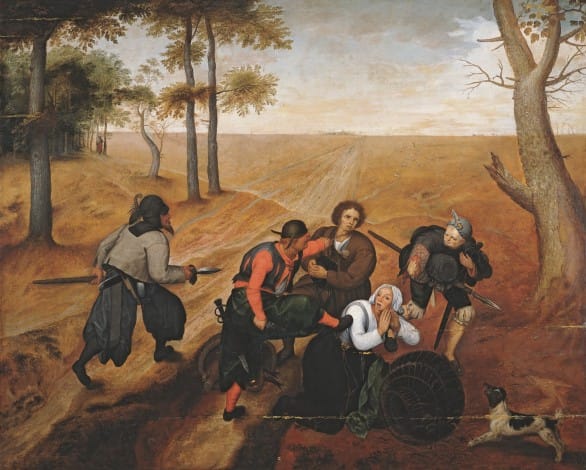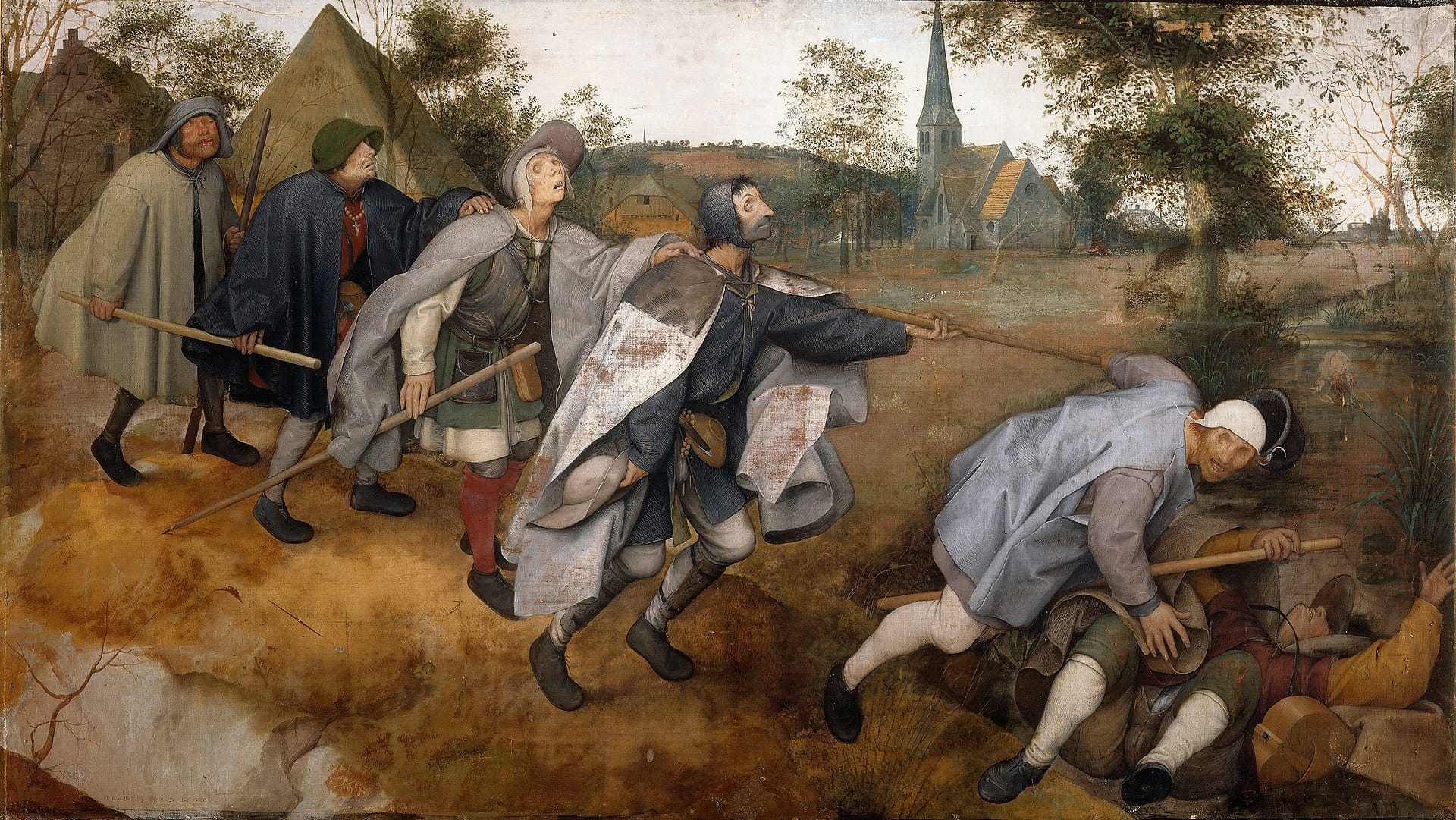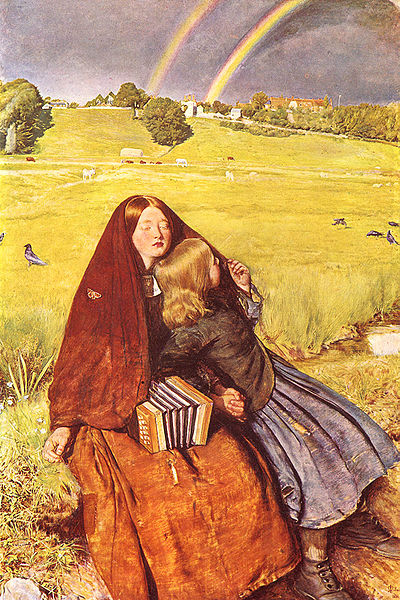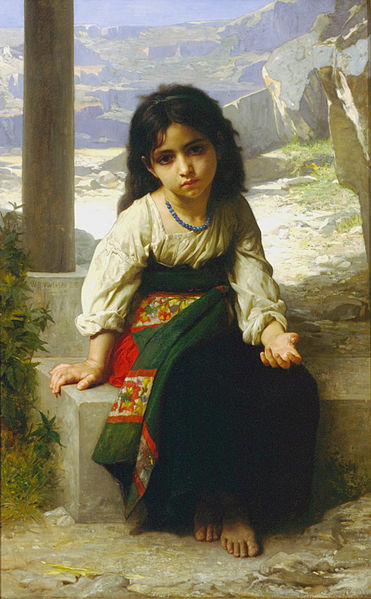Wanderers and Vagrants

In medieval and Renaissance Europe, tinkers and knife grinders, traders in beer and wine, salt and spices, laborers, mendicant priests, pilgrims and preachers, outlaws and bandits, highwaymen and renegade soldiers, minstrels, acrobats, dancers and healers were everywhere. They still are if you look, but that is another story. It was a society on the move. You would see them on the roads and in the villages, towns and cities. At sea there were pirates and trading ships.
Travelers appear in the tales of Marco Polo (The Travels of Marco Polo) and Chaucer (The Canterbury Tales), but it is only when they became the subjects of Pieter Bruegel the Elder's paintings, including The Parable of the Blind (1568), that the physicality and vulnerability of this life becomes tangible.

From the 1300s onwards, and especially after The Black Death (here), the tide turned against these people as cities and towns developed laws against them, defining them as beggars and vagrants, rogues and vagabonds. There seem to be no good books about this. It is understandable perhaps - intellectuals have been less predisposed to write about the poor and invisible people on the move - but it omits a sizable slice of history, including the awful policies that developed, like branding on the chest (M for mendiant, V for vagabond), public flogging and expulsion. Increasingly that meant to overseas colonies.
Rousseau - like Casanova - traveled constantly but much of it was driven by the fear of arrest. In Confessions he looked back at his life and theorized on what he had tried to do - live an exemplary life - even though it had meant poverty and exile, even though it had meant turning down a pension from Louis XV and Madame de Pompadour in 1753, even though it had meant making enemies.
As it became more difficult to be a vagabond, the lifestyle was taken up by the rich and comfortable - the so-called Grand Tour. After Rousseau and Casanova came the gentlemen scholars and painters of the 18th and 19th centuries, most of whom kept their traveling short - Shelley and Byron are unusual in that they did not think they had English homes to go back to. Others were really just armchair travelers, like Matthew Arnold (The Scholar Gipsy, in 1853) or John Everett Millais, whose Blind Girl (1856) is below. She appears to be an itinerant musician, from the concertina on her lap.

Romantic treatment of beggars reached an end with the Academic paintings of William-Adolphe Bouguereau. Below is La Petite Mendiante (1880). With the Impressionists and Modernists, vagabonds and vagrants became of little interest and they were found instead in the new working class entertainment associated with movies, notably Charlie Chaplin.

